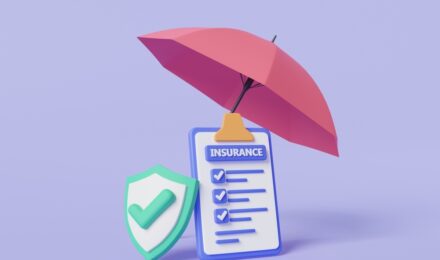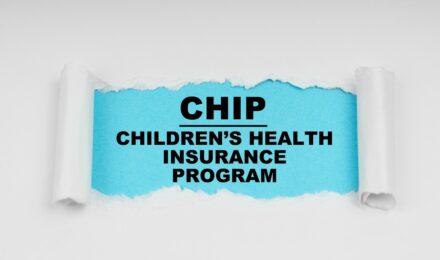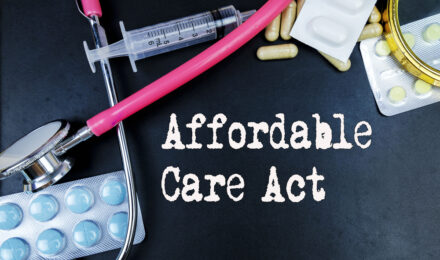Contents
The COVID-19 pandemic precipitated an unparalleled global health crisis and a nationwide economic upheaval, leaving countless families in the United States grappling with basic survival. Hunger skyrocketed. In response, President Joe Biden signed the American Rescue Plan (ARP) Act in March 2021, a bold legislative package designed to deliver immediate relief. Central to this initiative were pivotal enhancements to the Supplemental Nutrition Assistance Program (SNAP), ensuring no family endured hunger during these tumultuous times.
American Rescue Plan (ARP) and Economic Fallout of COVID-19
Before the pandemic, the U.S. had enjoyed a decade of economic growth. But the advent of COVID-19 unleashed a seismic economic shift, propelling unemployment rates to a staggering 14.8% — the highest since data collection began in 1948. Jobs disappeared overnight. Part-time workers, small business owners, and the hospitality sector bore the brunt of these catastrophic losses, resulting in pervasive layoffs and financial devastation.
As millions faced the anguish of job losses, food insecurity surged to alarming levels. This prompted the federal government to bolster SNAP benefits through the ARP, aiming to alleviate hunger while safeguarding access to nutritious food for vulnerable populations, including children, seniors, and individuals with disabilities. Could anything have been more crucial at that moment?
Inequities in Hardship: Age, Race, and Ethnicity
The pandemic unmasked deeply entrenched disparities among demographic groups. Older adults, people with disabilities, and communities of color, particularly Black, Hispanic, and Latinx individuals, faced disproportionate struggles. These inequities were not new. Structural barriers in employment, education, and healthcare exacerbated their vulnerabilities, pushing them to the brink of food insecurity. For these groups, the ARP’s provisions weren’t just necessary; they were lifesaving—a beacon of hope in a sea of adversity.
SNAP Enhancements Under the American Rescue Plan
SNAP—an indispensable cornerstone of the U.S. social safety net—underwent transformative modifications under the ARP to combat the pandemic’s harsh realities. The changes were nothing short of monumental.
Increased State Funding
To navigate the deluge of SNAP applications, the federal government infused additional administrative funding into state programs. This influx ensured states could process applications swiftly and deliver aid to families in dire straits without delay. What would families have done without this critical support?
Boosted Benefit Levels
The ARP temporarily increased SNAP benefits by 15%, enabling households to stretch their food budgets further. Groceries were pricey. This substantial augmentation, effective through September 2021, tackled skyrocketing food costs and the heightened demand for nutritious meals head-on.
Pandemic Electronic Benefit Transfer (P-EBT)
When schools closed and remote learning became the norm, countless families lost access to school-provided meals. The P-EBT program rose to the challenge, providing food benefit cards to eligible families. This ensured children continued receiving meals, despite the educational disruptions, during one of the most unsettling periods in modern history. How vital was this intervention? Immensely so.
Enhanced Support for Women, Infants, and Children (WIC)
The ARP didn’t stop at broad strokes. It expanded WIC benefits, increasing access to vital foods such as fruits and vegetables. These updates weren’t trivial adjustments; they represented meaningful strides in meeting the nutritional needs of participating families.
Assistance for U.S. Territories
Acknowledging the unique challenges faced by U.S. territories, the ARP extended food assistance to residents of Puerto Rico, Guam, the U.S. Virgin Islands, and other territories. Equity was paramount. This ensured no jurisdiction—no matter how geographically distant—was left out of the safety net.
The Ongoing Impact of ARP SNAP Provisions
Even as the nation cautiously moves toward recovery, the enduring impact of the ARP’s SNAP enhancements remains undeniable. By April 2024, approximately 41 million individuals still relied on SNAP benefits. That figure is astounding. While self-sufficiency remains the ultimate goal, the ARP underscored the indispensable role of government intervention in mitigating food insecurity and uplifting vulnerable populations during crises. Isn’t it remarkable what collective action can achieve?
By fortifying SNAP and related programs, the American Rescue Plan not only quelled immediate food insecurity but also forged the path toward a more resilient and equitable safety net system for future challenges. Who could deny its profound significance?
Resources
- U.S. Department of Agriculture (USDA) SNAP Information
https://www.fns.usda.gov/snap - Center on Budget and Policy Priorities: Analysis of ARP Food Assistance
https://www.cbpp.org/topics/snap - Feeding America: Food Insecurity Research and Resources
https://www.feedingamerica.org/research
Contents
The COVID-19 pandemic precipitated an unparalleled global health crisis and a nationwide economic upheaval, leaving countless families in the United States grappling with basic survival. Hunger skyrocketed. In response, President Joe Biden signed the American Rescue Plan (ARP) Act in March 2021, a bold legislative package designed to deliver immediate relief. Central to this initiative were pivotal enhancements to the Supplemental Nutrition Assistance Program (SNAP), ensuring no family endured hunger during these tumultuous times.
American Rescue Plan (ARP) and Economic Fallout of COVID-19
Before the pandemic, the U.S. had enjoyed a decade of economic growth. But the advent of COVID-19 unleashed a seismic economic shift, propelling unemployment rates to a staggering 14.8% — the highest since data collection began in 1948. Jobs disappeared overnight. Part-time workers, small business owners, and the hospitality sector bore the brunt of these catastrophic losses, resulting in pervasive layoffs and financial devastation.
As millions faced the anguish of job losses, food insecurity surged to alarming levels. This prompted the federal government to bolster SNAP benefits through the ARP, aiming to alleviate hunger while safeguarding access to nutritious food for vulnerable populations, including children, seniors, and individuals with disabilities. Could anything have been more crucial at that moment?
Inequities in Hardship: Age, Race, and Ethnicity
The pandemic unmasked deeply entrenched disparities among demographic groups. Older adults, people with disabilities, and communities of color, particularly Black, Hispanic, and Latinx individuals, faced disproportionate struggles. These inequities were not new. Structural barriers in employment, education, and healthcare exacerbated their vulnerabilities, pushing them to the brink of food insecurity. For these groups, the ARP’s provisions weren’t just necessary; they were lifesaving—a beacon of hope in a sea of adversity.
SNAP Enhancements Under the American Rescue Plan
SNAP—an indispensable cornerstone of the U.S. social safety net—underwent transformative modifications under the ARP to combat the pandemic’s harsh realities. The changes were nothing short of monumental.
Increased State Funding
To navigate the deluge of SNAP applications, the federal government infused additional administrative funding into state programs. This influx ensured states could process applications swiftly and deliver aid to families in dire straits without delay. What would families have done without this critical support?
Boosted Benefit Levels
The ARP temporarily increased SNAP benefits by 15%, enabling households to stretch their food budgets further. Groceries were pricey. This substantial augmentation, effective through September 2021, tackled skyrocketing food costs and the heightened demand for nutritious meals head-on.
Pandemic Electronic Benefit Transfer (P-EBT)
When schools closed and remote learning became the norm, countless families lost access to school-provided meals. The P-EBT program rose to the challenge, providing food benefit cards to eligible families. This ensured children continued receiving meals, despite the educational disruptions, during one of the most unsettling periods in modern history. How vital was this intervention? Immensely so.
Enhanced Support for Women, Infants, and Children (WIC)
The ARP didn’t stop at broad strokes. It expanded WIC benefits, increasing access to vital foods such as fruits and vegetables. These updates weren’t trivial adjustments; they represented meaningful strides in meeting the nutritional needs of participating families.
Assistance for U.S. Territories
Acknowledging the unique challenges faced by U.S. territories, the ARP extended food assistance to residents of Puerto Rico, Guam, the U.S. Virgin Islands, and other territories. Equity was paramount. This ensured no jurisdiction—no matter how geographically distant—was left out of the safety net.
The Ongoing Impact of ARP SNAP Provisions
Even as the nation cautiously moves toward recovery, the enduring impact of the ARP’s SNAP enhancements remains undeniable. By April 2024, approximately 41 million individuals still relied on SNAP benefits. That figure is astounding. While self-sufficiency remains the ultimate goal, the ARP underscored the indispensable role of government intervention in mitigating food insecurity and uplifting vulnerable populations during crises. Isn’t it remarkable what collective action can achieve?
By fortifying SNAP and related programs, the American Rescue Plan not only quelled immediate food insecurity but also forged the path toward a more resilient and equitable safety net system for future challenges. Who could deny its profound significance?
Resources
- U.S. Department of Agriculture (USDA) SNAP Information
https://www.fns.usda.gov/snap - Center on Budget and Policy Priorities: Analysis of ARP Food Assistance
https://www.cbpp.org/topics/snap - Feeding America: Food Insecurity Research and Resources
https://www.feedingamerica.org/research






